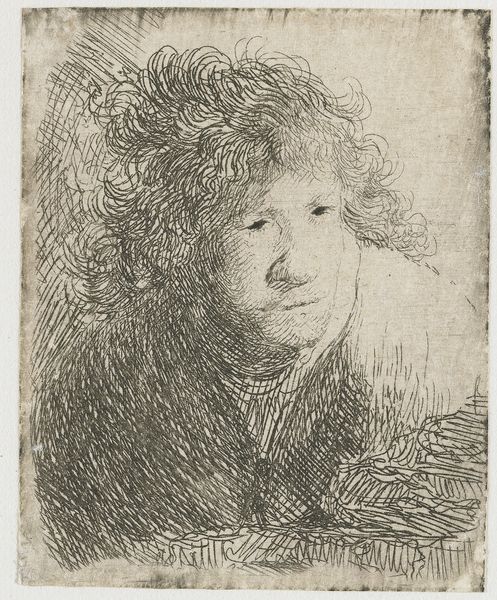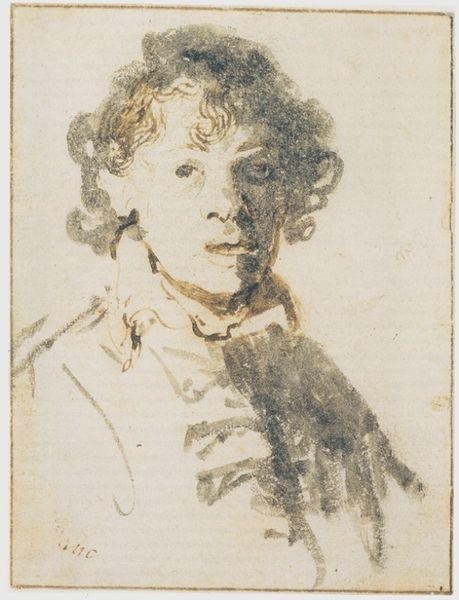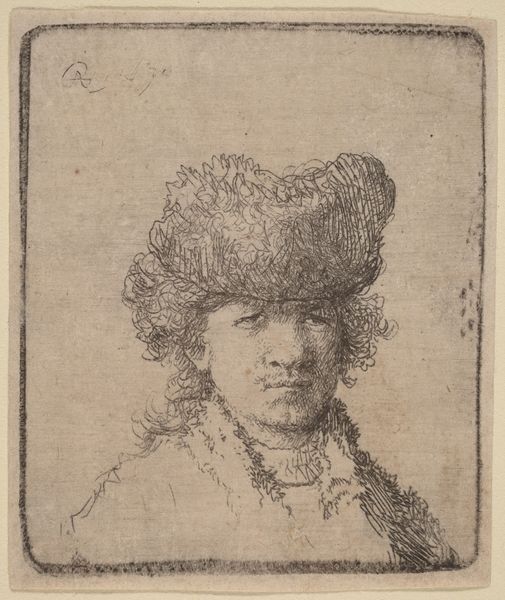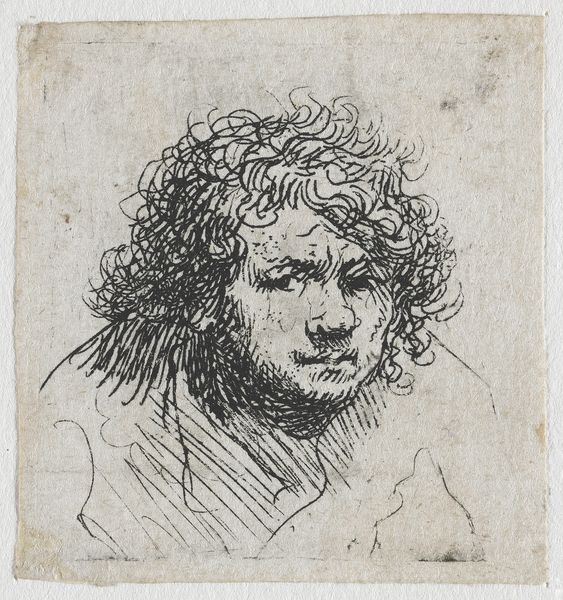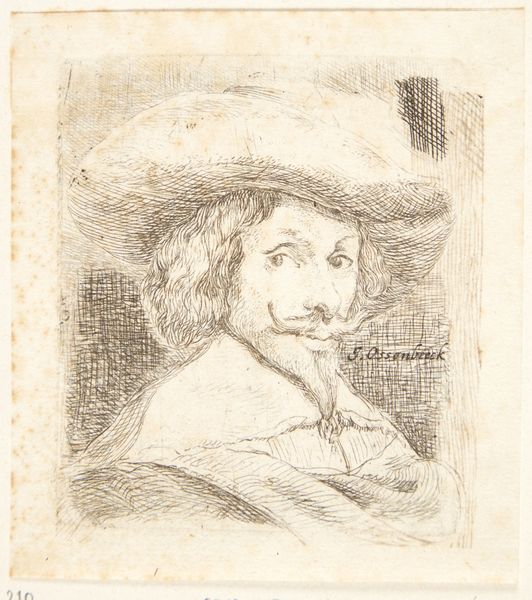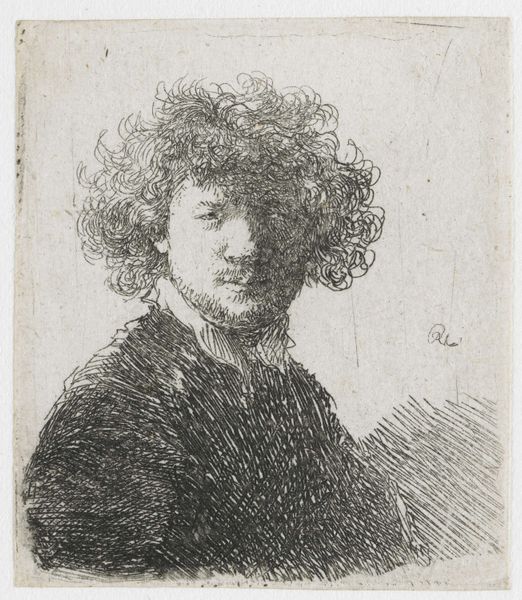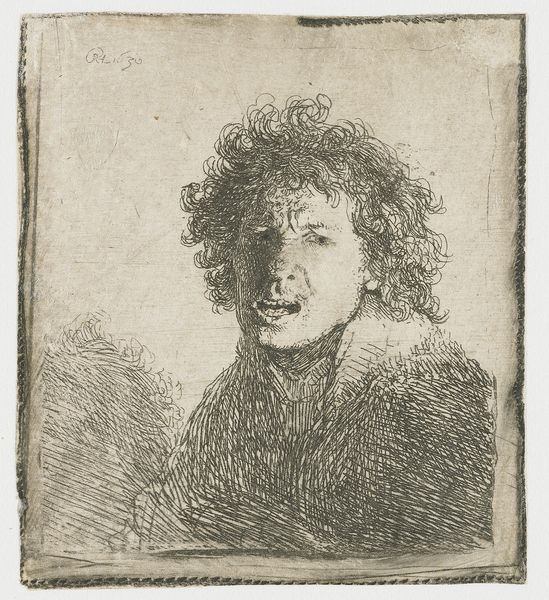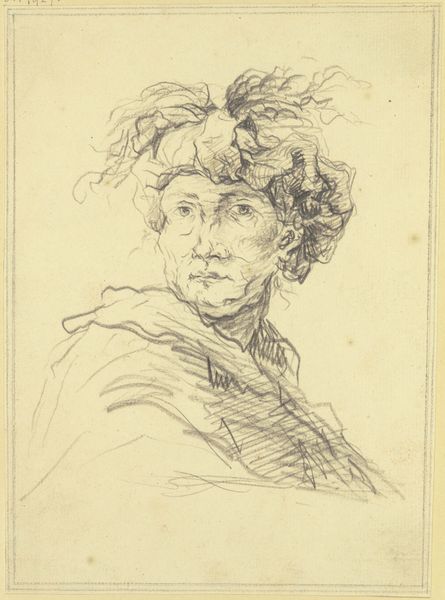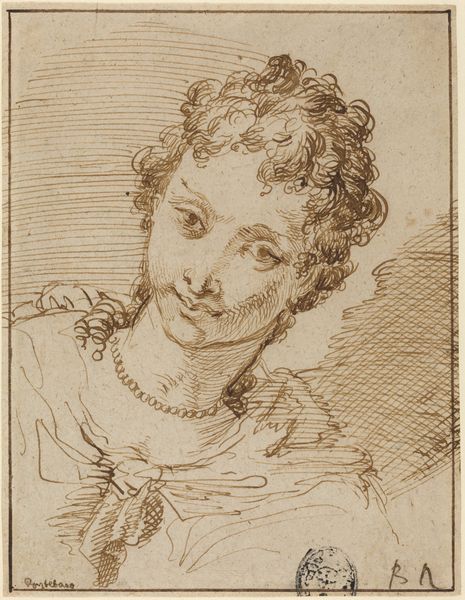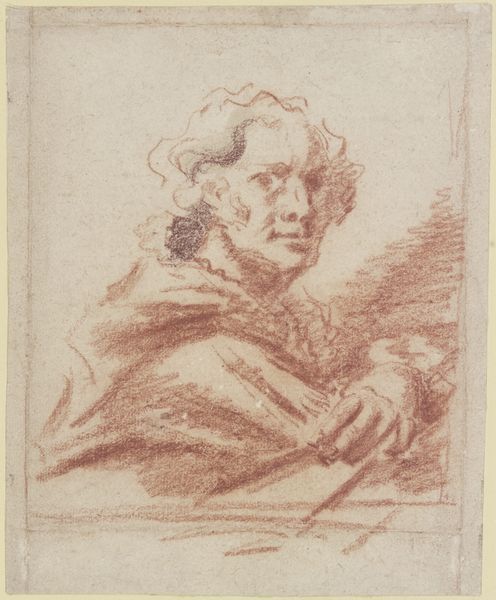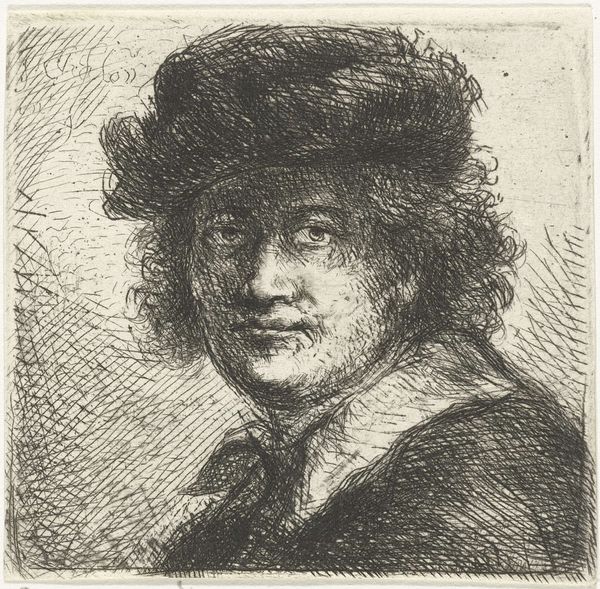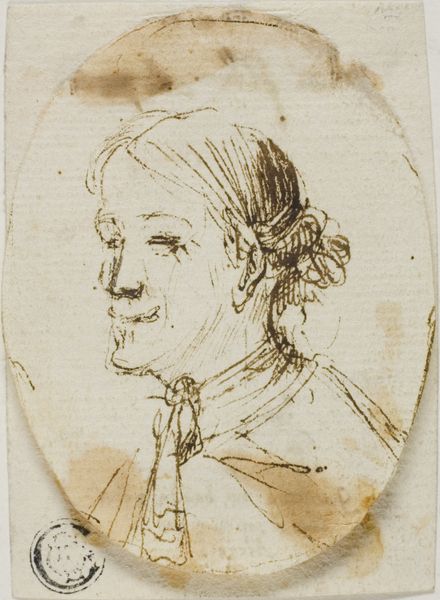
drawing, paper, ink, charcoal
#
portrait
#
drawing
#
self-portrait
#
baroque
#
paper
#
ink
#
coloured pencil
#
charcoal
Copyright: Public domain
Editor: Here we have Rembrandt van Rijn's "Self-portrait" from 1629, rendered in ink and charcoal on paper. The loose lines give it such an immediate, almost impulsive feeling. What stands out to you? Curator: Notice how Rembrandt captures himself here, not with regal pomp, but with an arresting sense of introspection. Even at a young age, his gaze pierces through, inviting us to consider the weight of the artist’s self-awareness. What does the shading evoke for you? Does it bring any symbolic meaning? Editor: I feel like the stark shadows, particularly around the eyes, give it an underlying sense of melancholy or even a little vulnerability. Is that a common theme in self-portraits of that period? Curator: Indeed. The Baroque period often used dramatic light and shadow to explore the human condition and the transient nature of life. It’s worth considering what “self” meant in the 17th century. How did notions of identity manifest symbolically? Rembrandt consistently investigated inner life and personal experience; how did societal expectation then impact this self-regard? Editor: So, beyond just a likeness, it is an examination of self, filtered through cultural symbols and expectations? Curator: Precisely. The slightly dishevelled hair, the loose collar - perhaps it's a nod to artistic genius being somewhat outside of societal norms, and the way shadow conceals and reveals facets of his character for viewers over the ages. The image creates lasting cultural memories. Editor: I never considered how deeply interwoven those cultural symbols and psychological perspectives could be! It feels less like a snapshot and more like a mirror reflecting the artist's soul. Curator: And through it, a reflection of our own, centuries later. An artist’s visual language always bears continuous reverberations.
Comments
No comments
Be the first to comment and join the conversation on the ultimate creative platform.
